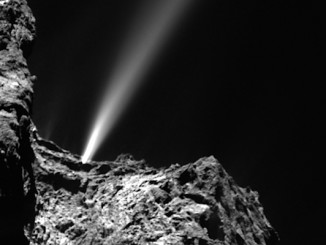
News

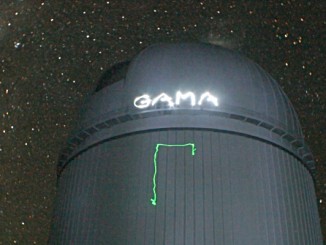
Galaxy survey charts the fading and slow death of the universe
An international team of astronomers studying more than 200,000 galaxies has made the most comprehensive assessment of the energy output of the nearby universe. The Galaxy And Mass Assembly (GAMA) project confirms that the energy produced is only about half what it was two billion years ago and this fading is occurring across all wavelengths from the ultraviolet to the far infrared. The universe is slowly dying.

Kepler finds tenth transiting ‘Tatooine’ exoplanet
Astronomers have discovered the tenth known ‘transiting circumbinary’ planet, which orbits two stars. Like the fictional planet “Tatooine” from Star Wars, this planet has two suns in its sky. Known as Kepler-453 b, the new planet is a gas-giant six times the diameter of Earth and lies in the habitable zone of its host pair of stars.
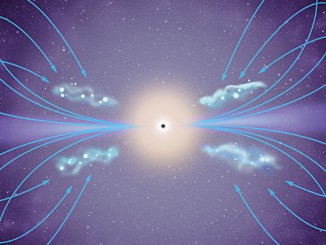
Hubble reveals galaxy gas flow and star birth regulated by black-hole jets
Astronomers have uncovered a unique process for how the universe’s largest elliptical galaxies continue making stars long after their peak years of star birth. NASA’s Hubble Space Telescope revealed brilliant knots and chains of hot, blue stars forming along the jets of active black holes found in the centres of giant elliptical galaxies.

Last vestiges of surface water on Mars indicated by salt flat
Mars turned cold and dry long ago, but scientists have discovered evidence of an ancient lake that likely represents some of the last potentially habitable surface water ever to exist on the Red Planet. University of Colorado Boulder researchers estimate that the lake was only about 8 percent as salty as the Earth’s oceans and therefore may have been hospitable to microbial life.
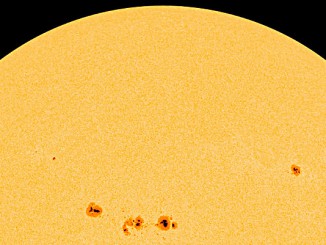
Corrected sunspot history suggests climate change not due to natural solar trends
The Sunspot Number, the longest scientific experiment still ongoing, is a crucial tool used to study the solar dynamo, space weather and climate change. It has now been recalibrated and shows a consistent history of solar activity over the past few centuries. The new record has no significant long-term upward trend in solar activity since 1700, suggesting that rising global temperatures since the industrial revolution cannot be attributed to increased solar activity.
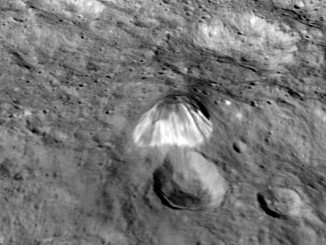
Ceres’ mysterious bright spots and 4-mile-tall pyramidal mountain in 3-D
Since its arrival at dwarf planet Ceres on 6 March this year, NASA’s Dawn spacecraft has been slowly spiralling closer to this enigmatic little world. Mission scientist are nearer finding explanations for the intriguing bright spots in a crater named Occator and why an isolated mountain — as high as any in North America — is sitting in the middle of nowhere.
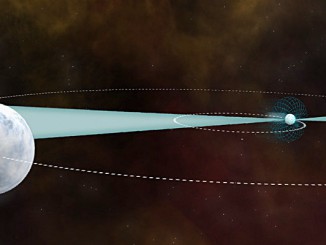
Pulsar study suggests force of gravity constant throughout universe
Gravity, one of the four fundamental forces of nature, appears reassuringly constant across the universe, according to a decades-long study of a distant pulsar. This research helps to answer a long-standing question in cosmology: Is the force of gravity the same everywhere and at all times? The answer, so far, appears to be yes.
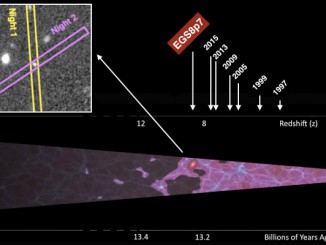
A new record: Keck Observatory measures most distant galaxy
EGSY8p7 is the most distant confirmed galaxy whose spectrum obtained with the W. M. Keck Observatory places it at a redshift of 8.68, at a time when the universe was less than 600 million years old. Hydrogen emission from EGSY8p7 may indicate it is the first known example of an early generation of young galaxies emitting unusually strong radiation.

Scientists solve age-old planetary ring riddle
An international team of scientists has solved an age-old scientific riddle by discovering that planetary rings, such as those orbiting Saturn, have a universally similar particle distribution. The study also suggests that Saturn’s rings are essentially in a steady state that does not depend on their history.
